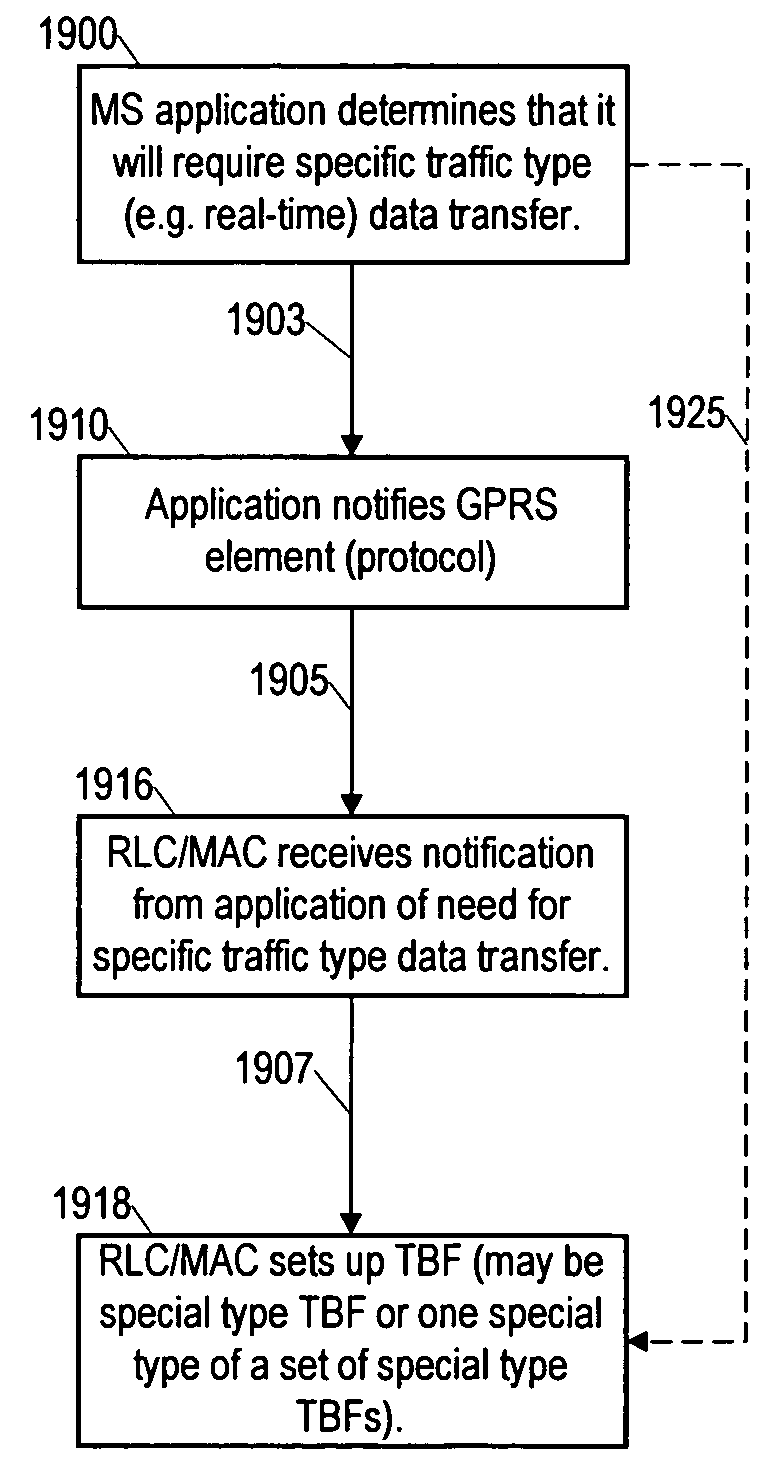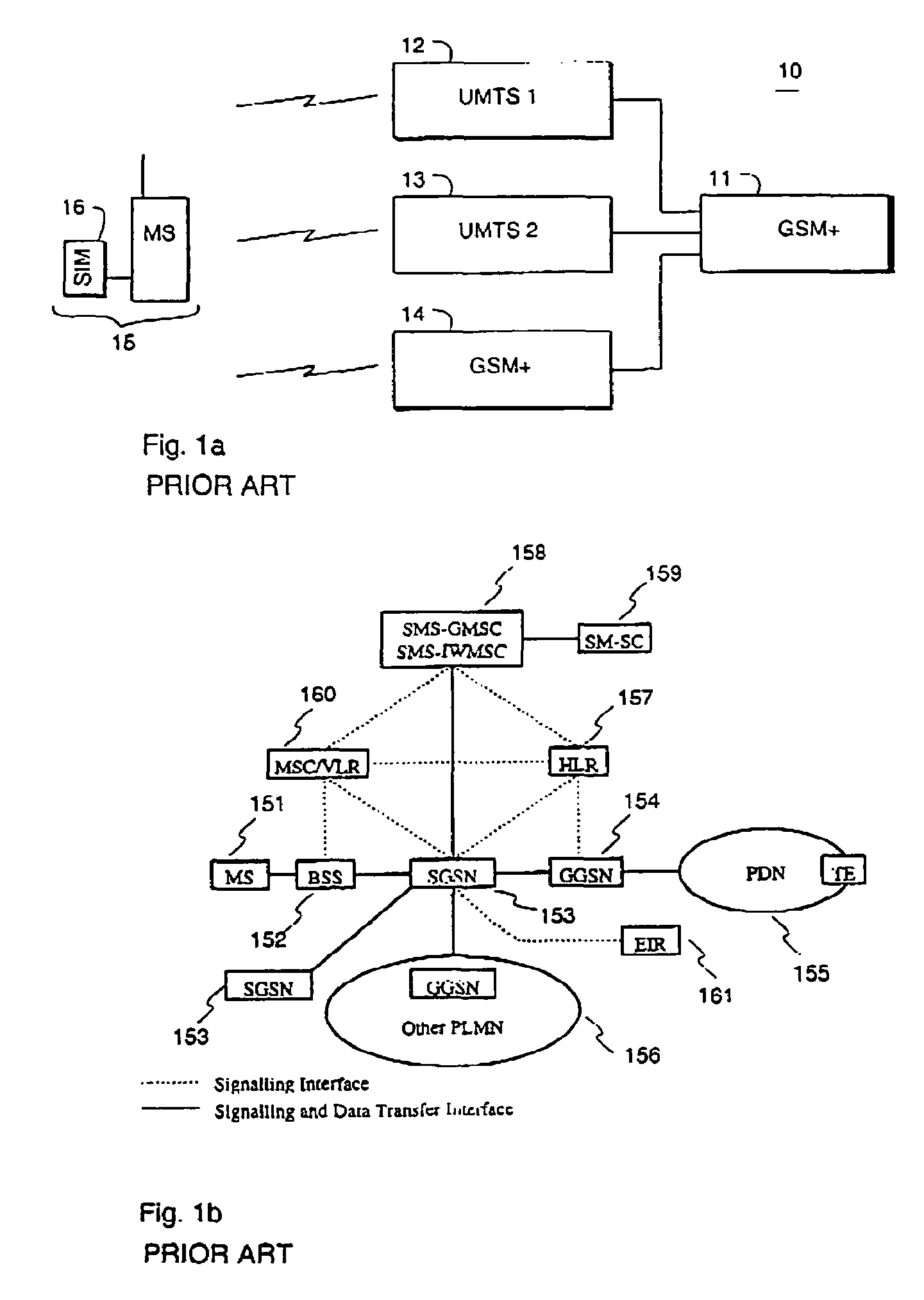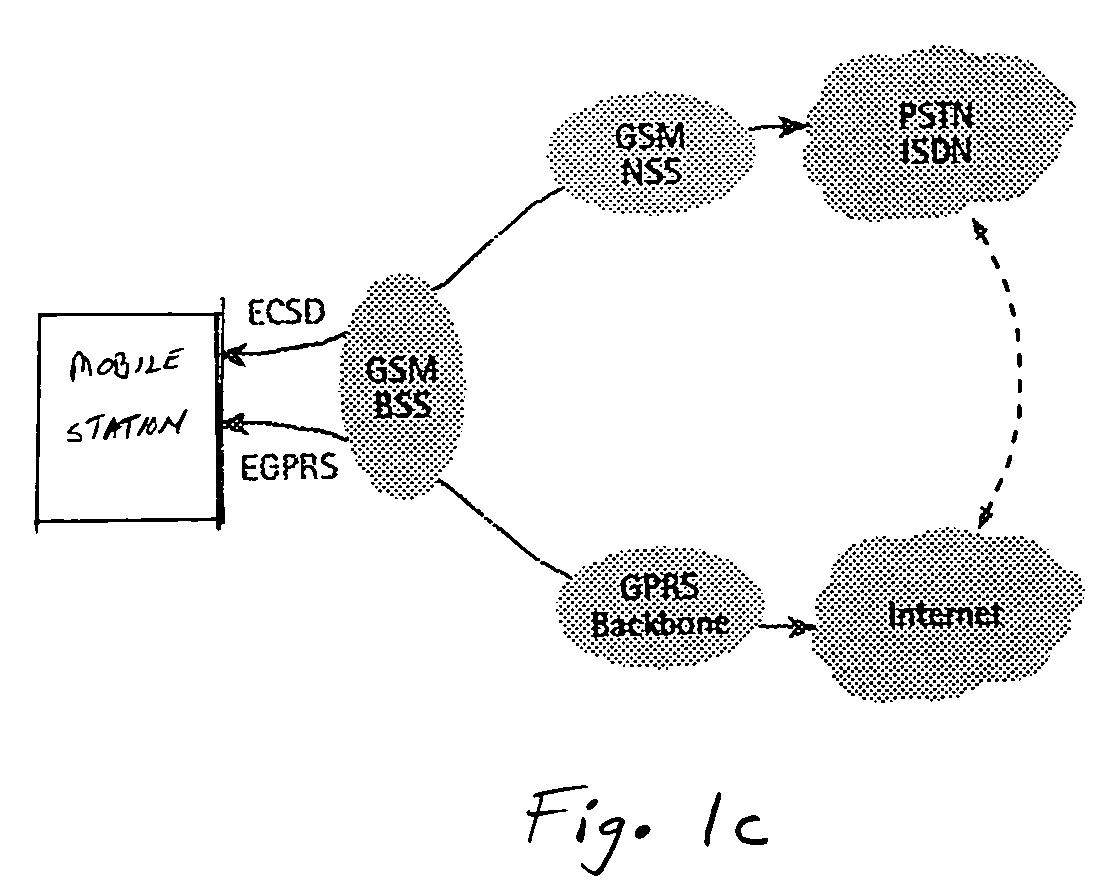Method and arrangement for transferring information in a packet radio service with application-based choice of release mode
a packet radio and information transfer technology, applied in the field of method and arrangement for transferring information in a packet radio service, can solve problems such as unnecessary signalling and tearing down of tb
- Summary
- Abstract
- Description
- Claims
- Application Information
AI Technical Summary
Benefits of technology
Problems solved by technology
Method used
Image
Examples
Embodiment Construction
Introduction
[0080]FIGS. 1a, 1b and 2 were previously described in the prior art description. In the following, principles of indicating specific traffic type (e.g. delay sensitive data) and of allocating resources are first described using an embodiment in a GRPS system as an example. Next a description is given with respect to Temporary Block Flow (TBF) setup and release control at the RLC / MAC layer. In this section the placing of the release information into the MAC header is described with reference to FIGS. 3, 4a and 4b. The steps of this method are described with reference to FIGS. 5–9. Then a mobile station and a cellular system with respect to this section are described with references to FIG. 10. The details of the present application layer control of the setup and release of Temporary Block Flow (TBF) is then presented with reference to FIGS. 11a–16.
RLC / MAC TBF Control
[0081]In an uplink resource allocation, a mobile station indicates to the network that it requires radio re...
PUM
 Login to View More
Login to View More Abstract
Description
Claims
Application Information
 Login to View More
Login to View More - R&D
- Intellectual Property
- Life Sciences
- Materials
- Tech Scout
- Unparalleled Data Quality
- Higher Quality Content
- 60% Fewer Hallucinations
Browse by: Latest US Patents, China's latest patents, Technical Efficacy Thesaurus, Application Domain, Technology Topic, Popular Technical Reports.
© 2025 PatSnap. All rights reserved.Legal|Privacy policy|Modern Slavery Act Transparency Statement|Sitemap|About US| Contact US: help@patsnap.com



